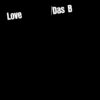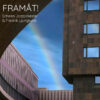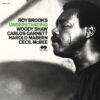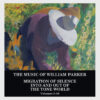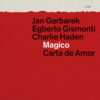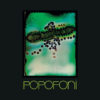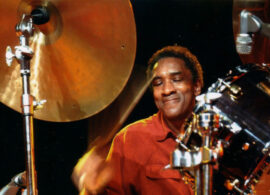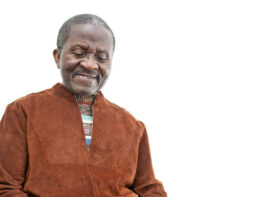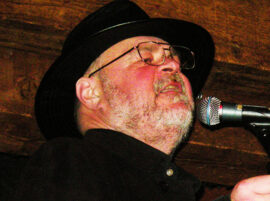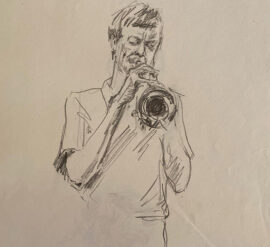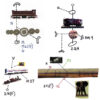
Belgian guitarist Kobe Van Cauwenberghe is fascinated with Anthony Braxton’s music. In 2020 he recorded three compositions of Braxton’s system for a solo guitar album «Ghost Trance Solos» (all that dust, 2020). A year later he performed another of Braxton’s elaborate sonic systems, Echo Echo Mirror House Music. On his new double album with the ghost Trance Septet, he performs one of the compositions from «Ghost Trance Solos», No. 255, plus three others, now arranged for a Belgian-Danish septet, featuring Van Cauwenberghe on guitars, bassist Frederik Sakham, pianist Elisa Medinilla, euphonium and trumpet player Niels Van Heertum, reeds player Steven Delannoye, violinist Anna Jalving and drummer-percussionist Teun Verbruggen. The release of «Plays Anthony Braxton Compositions No. 255, 358, 193 and 264» coincides with Braxton’s 77th birthday and Braxton’s European tour where he would share a stage with Van Cauwenberghe performing the master’s compositions.
German writer and Braxton’s scholar Timo Hoyer, who wrote the book «Anthony Braxton – Creative Music» (Wolke Verlag, 2021), added insightful liner notes that decipher some of the extremely idiosyncratic, uncompromisingly advancing compositional ideas of Braxton. His composition offers an infinitely inventive collage or synthesis of notated, partially fixed, intuitive and improvised components. First of all, Hoyer mentions that Braxton advises all potential performers and interpreters of his compositions, to have fun, to take risks and forget about playing it correctly, and to be creative, make mistakes and be sure to keep their sense of humor.
Braxton’s Ghost Trance Music (GTM) system marks a creative period that began in the mid-nineties and continues to this day. He composed 138 compositions in this system between 1995 to 2006. The eclectic GTM encompasses rituals of the Native Americans, the repetitive continuums of Minimal Music, the rhythmic diversity and trans-tonality of African music, the parallel sound events of street parades, and the intensity and improvisational passion of jazz, and much more. The scores consist of two parts – primary melody with all instruments playing it in unison, and secondary material where Braxton expects a creative, quite liberal handling of the material. Braxton allows the performers to include passages from any of his compositions.
Van Cauwenberghe’s Ghost Trance Septet is well-versed with Braxton’s immense material, follows Braxton’s advice and shines with spirited creativity, an imaginative energy, and an open, daring mind. Braxton has seen Van Cauwenberghe’s Ghost Trance Septet perform his composition No. 255 at the Rainy Days Festival in November 2021 and could hardly contain himself with emotion and excitement. This composition also opens the double album of the Ghost Trance Septet, and the septet performs it with a cerebral but quite sensual and uplifting spirit and references Braxton’s compositions No. 40f and No. 168, once written for a duo session with guitarist James Emery, in such brilliant manner that you can immediately identify with Braxton’s excitement. The following composition No. 358 highlights the emotionality and the rhythmic playfulness of this clever composition. The septet clearly enjoys creating the dissolving forms, mixing melodic veins into atonal chaos, and suddenly introducing quotes of Braxton’s a march-like Composition No. 58 with more references to compositions No. 168 and No. 108d.
The second album begins with Composition No. 193, one of the early GTM compositions. The septet slowly detaches itself from the primary melody and then slows down even further and lets the sonic substance become fleeting and transparent like a fascinating mirage. But then the septet charges with new energy and new nuances of the primary melody, while incorporating elements from compositions No. 48, No. 108c and No. 6f. The last composition No. 264 was not documented before, and the septet performance offers many contrasting timbres (and the choice of instruments is almost always left to the musicians in the GTM) and brilliant rhythmic changes. The septet incorporates elements from compositions No. 108a, Mo. 101, No. 204, No. 40b and No. 40o, and enriches its intricate dynamics with «post-be-bop thematic structure».
Great, inspiring performance.
Eyal Hareuveni
Kobe Van Cauwenberghe (el.g, nylon string g, el.b, synth, v), Frederik Sakham (b, v), Elisa Medinilla (p), Niels Van Heertum (euphonium, tp), Steven Delannoye (ts, bcl), Anna Jalving (vio), Teun Verbruggen (dr, perc)

